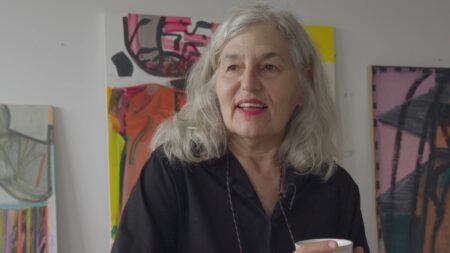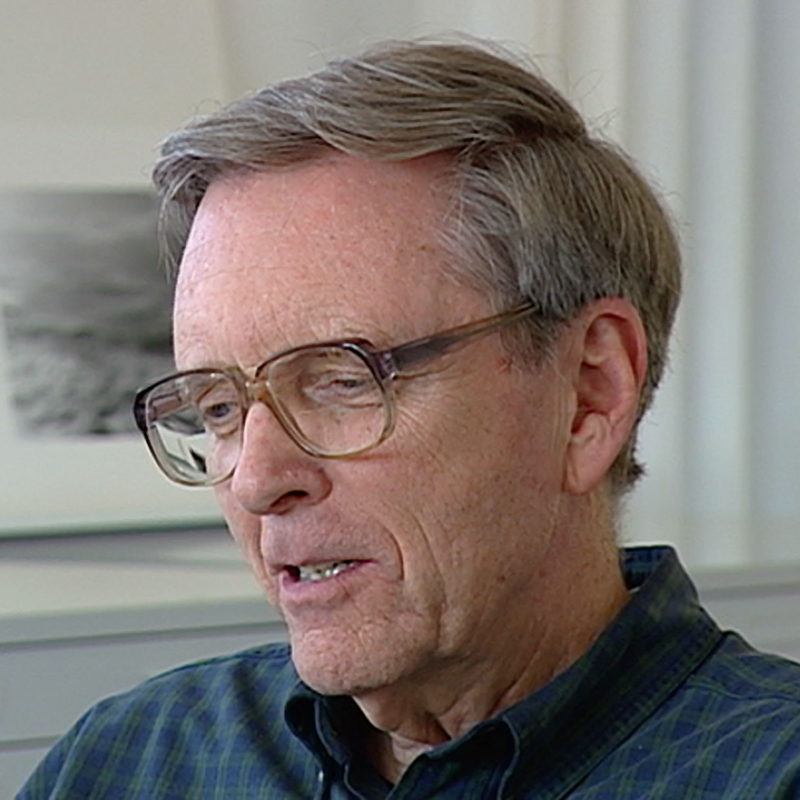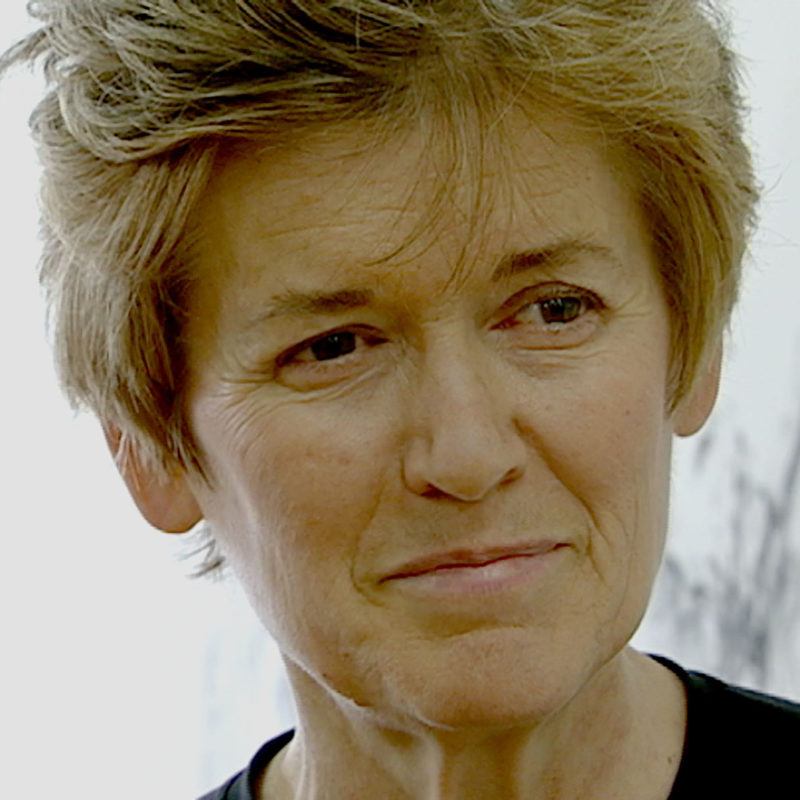Continue playing
(Time remaining: )
Play from beginning
Continue playing "{{ controller.videos[controller.getVideo(controller.currentVideo)].segmentParentTitle}}"
{{controller.videos[controller.getVideo(controller.currentVideo)].title}} has ended.
Ecology
This episode delves into the work of four artists who explore the relationship of nature and culture, including the submission of wilderness to civilization, the foundations of scientific knowledge, the impact of technology on biology, and our relationship to the earth forged by working the land.
Ecology was shot on location in New York, New York; Los Angeles, California; Chicago, Illinois; Rochester, Minnesota; Seattle, Washington; Astoria, Oregon; Cape Disappointment, Washington; King County, Washington; Beach Lake, PA; and Williamstown, Massachusetts.
More information and creditsCredits
Created by: Susan Sollins & Susan Dowling. Executive Producer & Curator: Susan Sollins. Series Producer: Eve-Laure Moros Ortega. Associate Producer: Migs Wright. Associate Curator: Wesley Miller. Production Manager: Alice Bertoni & Nick Ravich. Production Coordinator: Amanda Donnan & Meredith Klein. Consulting Director: Catherine Tatge. Editor: Steven Wechsler. Director of Photography: Bob Elfstrom, Mark Falstad, Mead Hunt, & Joel Shapiro. Additional Photography: Christine Burrill, Alice Bertoni, & John Gordon Hill. Sound: Tom Bergin, Ray Day, Doug Dunderdale, Heidi Hesse, Mark Mandler, Gabriel Monts, Roger Phenix, Yuri Raicin, & Charles Tomaras. Audio Technician: Drew Weir. Assistant Camera: Craig Feldman & Brian Hwang. Jib Arm Operator: Scott Hoffman. Production Assistant: Carlos Moncada & David Nugent. Additional Animation: Shawn Dunbar.
Creative Consultant: Ed Sherin. Art Direction & Design: Open, New York. On-Line Editor: Don Wyllie. Composer: Peter Foley. Voice-Over Artist: Jace Alexander. Sound Editing: Margaret Crimmins & Greg Smith. Sound Mix: Cory Melious & Tony Volante. Animation Stand: Frank Ferrigno. Assistant Editor: Ahmed Amer, Jennifer Chiurco, & George Panos.
Director of Education & Public Programs: Tana Hargest. Education Consultant: Jessica Hamlin. Manager of Public Programs & Outreach: Kelly Shindler. Web Producer: Ana Otero. Senior Development Officer: Beth Allen. Development Associate: Sara Simonson. Development Coordinator: Erin Cesta & Katherine Payne.
Artworks Courtesy of: Robert Adams; Mark Dion; Iñigo Manglano-Ovalle; Ursula von Rydingsvard; Fraenkel Gallery, San Francisco; Galerie Lelong, New York; Matthew Marks Gallery, New York; Max Protetch, New York; Seattle Art Museum; & Tanya Bonakdar Gallery, New York. Archival Footage Courtesy of: Ursula Anne von Rydingsvard.
Special Thanks: Mark Hereld; Rick Gribenas; Kerstin Adams; ADM Works, Los Angeles; Angela Andres; The Art21 Board of Trustees; James Barber; Vanessa Bergonzoli; Callen Blair; Bloomberg; Josie Browne; Daniel Cheek; Tyler Cufley; Stuart Desmond; Renee Devine; Dog Bark Sound; Kris Douglas; Michael Finn; Frame:Runner NYC; Jules Gaffney; Gina Glascock-Broze; Green River Watershed, King County, WA; Rick Gribenas; Tamara Gubernat; Anthony Guzzone; Anneka Herre; Mark Herald; Todd Holmes; Hyde Park Art Center, Chicago; Stephanie Joson; Bryan King; Meredith Klein; Cristobal Lehyt; Sheila Lynch; Mad. Sq. Art; Anna Miller; J. Morgan Pruett; Julia Murray; Brandon Noble; Jeffrey Peabody; Allison Peters; Eli Ping; J. Morgan Pruett; Andre Ribuoli; Rochester Art Center, Rochester, MN; Seattle Art Museum and Olympic Sculpture Park; Sound Lounge; Dawn Troy; Christina Turley; U.S. General Service Administration; Vagabond Audio; & Javier Valdivieso.
Interns: Stephanie Abraitis, Alex Agnant, Gabriella della Croce, Nora Herting, Milena Hoegsberg, Rives Kitchell, Katie McCurry, Simone Otenaike, Karoline Pfeiffer, Nick Pozek, Carolina Puente, Muña Qamar, Bettina Riccio Henry, Meg Scally, Karen Seapker, Peter Sebeckis, Lucy Strong, & Kelly Williamson.
Public Relations: Goodman Media International. Station Relations: De Shields Associates, Inc. Legal Counsel: Albert Gottesman. Bookkeeper: Marea Alverio-Chaveco & Valerie Riley. Travel Agent: Lita Gottesman.
Major underwriting for Season 4 of Art in the Twenty-First Century is provided by National Endowment for the Arts, PBS, Agnes Gund and Daniel Shapiro, Nathan Cummings Foundation, Bloomberg, The Andy Warhol Foundation for the Visual Arts, The Horace W. Goldsmith Foundation, Bagley Wright Fund, and W.L.S. Spencer Foundation.
Closed captionsAvailable in English, German, Romanian, Italian, Japanese, Korean, Chinese, Italian
Through the Art21 Translation Project, multilingual audiences from around the globe can contribute translations, making Art21 films more accessible worldwide.
Interested in showing this film in an exhibition or public screening? To license this video please visit Licensing & Reproduction.
Iñigo Manglano-Ovalle’s technologically sophisticated sculptures and video installations use natural forms such as clouds, icebergs, and DNA as metaphors for understanding social issues such as immigration, gun violence, and human cloning. In collaboration with astrophysicists, meteorologists, and medical ethicists, Manglano-Ovalle harnesses extraterrestrial radio signals, weather patterns, and biological code, transforming pure data into digital video projections and sculptures realized through computer rendering. His work is attentive to points of intersection between local and global communities, emphasizing the intricate nature of ecosystems.
Mark Dion’s work examines the ways in which dominant ideologies and public institutions shape our understanding of history, knowledge, and the natural world. Appropriating archaeological and other scientific methods of collecting, ordering, and exhibiting objects, Dion creates works that question the distinctions between “objective” (“rational”) scientific methods and “subjective” (“irrational”) influences. By locating the roots of environmental politics and public policy in the construction of knowledge about nature, Mark Dion questions the authoritative role of the scientific voice in contemporary society.
Robert Adams’ refined black-and-white photographs document scenes of the American West of the past four decades, revealing the impact of human activity on the last vestiges of wilderness and open space. Although often devoid of human subjects, or sparsely populated, Adams’s photographs capture the physical traces of human life: a garbage-strewn roadside, a clear-cut forest, a half-built house. An underlying tension in Adams’s body of work is the contradiction between landscapes visibly transformed or scarred by human presence and the inherent beauty of light and land rendered by the camera.
Ursula von Rydingsvard’s massive sculptures reveal the trace of the human hand and resemble wooden bowls, tools, and walls that seem to echo the artist’s family heritage in pre-industrial Poland before World War II. She builds towering cedar structures, creating an intricate network of individual beams and sensuous, puzzle-like surfaces. While abstract at its core, von Rydingsvard’s work takes visual cues from the landscape, the human body, and utilitarian objects—such as the artist’s collection of household vessels—and demonstrates an interest in the point where the man-made meets nature.
“I’m not one of these artists who is spending a lot of time imagining a better ecological future. I’m more the kind of artist who is holding up a mirror to the present.”
Mark Dion




